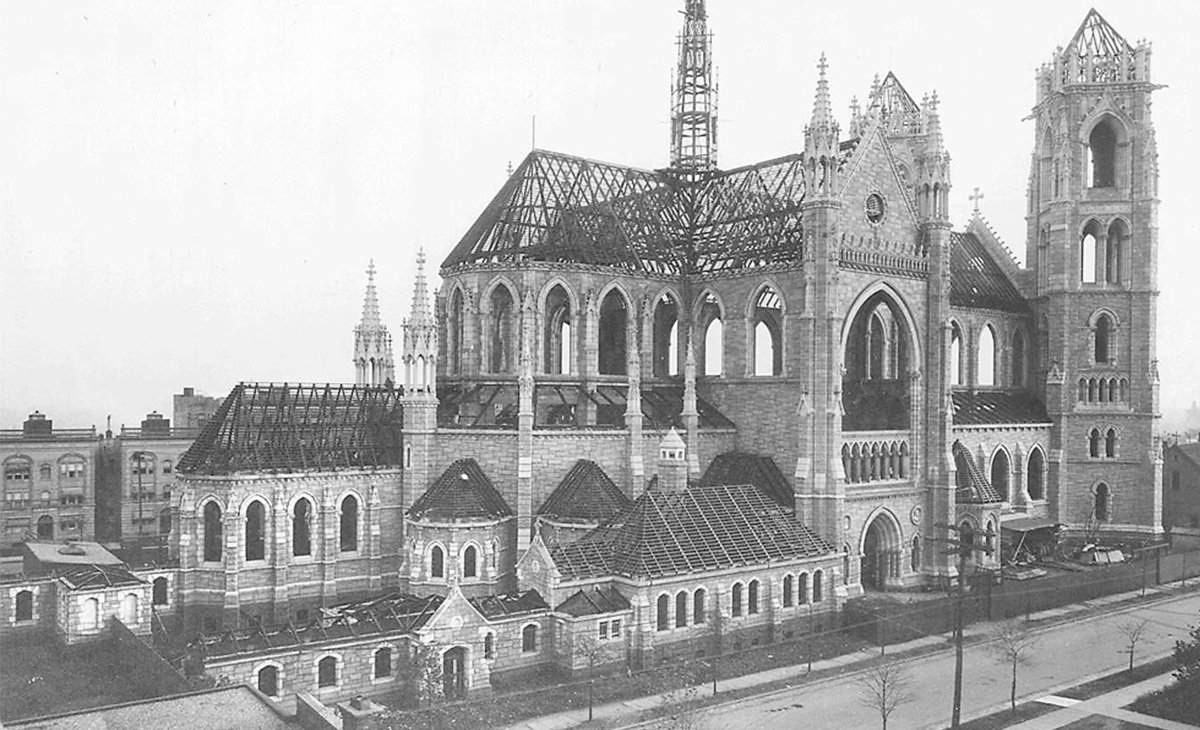Happy Birthday, Archdiocese of Newark! Here’s what happened 170 years ago
On July 29, the Archdiocese of Newark celebrated its 170th birthday. While much has changed in nearly two centuries, the early history of the archdiocese can still be seen today in its churches and schools as a reflection of the immigrants, religious communities, and bishops who planted the seeds of the Catholic Church in New Jersey.
The diocese’s existence begins with Pope Pius IX, who holds the longest verified papal reign from 1846 to 1878. During his papacy, waves of German, Irish, and Italian immigrants arrived in the United States, driving the number of Catholics in the nation from 4% of the population to 11% and the number of priests from 700 to 6,000. As more Catholics arrived, the American bishops expressed the need to redefine the ecclesiastical landscape of the nation to accommodate the immigrants, and so Pius IX became the father of much of the modern American church structure by establishing many of the dioceses that exist today.
In particular, July 29, 1853, was a productive day for the Holy Father in America. He erected a dozen dioceses, seven of which remain in existence: Brooklyn, Burlington, Erie, Newark, Portland, San Francisco, and Santa Fe. The Diocese of Newark was created to encompass all of New Jersey, with the northern half of the state taken from the Diocese of New York and the southern half taken from the Diocese of Philadelphia. Newark would remain a suffragan diocese of New York for 84 years, until its elevation to the status of archdiocese in 1937.
The early history of the Diocese of Newark was defined by the faith of its immigrants and the unique visions of its bishops.
The Most Rev. James Bayley was consecrated as the First Bishop of the Diocese of Newark on Oct. 30, 1853. Bishop Bayley, the nephew of Saint Elizabeth Ann Seton, was a strong proponent of Catholic education. Bishop Bayley’s hope was to have every Catholic child in the state in a Catholic school. In addition to the many parochial schools established during his time, he saw the need for a Catholic college and in 1856 established both Seton Hall College and Immaculate Conception Seminary, naming the college in honor of his aunt.

Under Bishop Bayley, the Diocese of Newark saw enormous growth, expanding from 33 parishes in 1853 to 113 in 1872.
The Second Bishop of Newark was a native of the city – and a young one at that. Most Rev. Michael Corrigan became the youngest bishop in the United States when he was appointed in 1873 at the age of 34. Despite his youth, he shepherded the diocese through an economic depression caused by the Panic of 1873.
Following Bishop Corrigan’s departure for the Diocese of New York in 1881, Most Rev. Winand Wigger was named the Third Bishop of Newark – a controversial appointment to say the least, due to Bishop Wigger’s German heritage. At the time, the diocese’s ethnic makeup was predominantly Irish, which often feuded with the German minority. German Catholics refused to give up their native language in their devotion and education, while the Irish Catholic hierarchy demanded that they assimilate.
Despite the reality of a German American bishop leading a largely Irish American flock, Bishop Wigger successfully navigated tensions and further established the diocese as a welcoming spiritual home for immigrants, opening many new parishes and parochial schools. He broke ground for the Cathedral of the Sacred Heart in January 1898 on a plot of land that had been purchased by Bishop Bayley 27 years earlier, although it wouldn’t be until 1954 that the cathedral was completed.
Bishop Wigger’s time as bishop lasted 20 years, followed by a 26-year period led by Bishop John J. O’Connor. Under Bishop O’Connor, the Catholic population of the diocese doubled with 53 parishes established, including for the Italian, Polish, Lithuanian, Slavic, Slovak, Hungarian, Armenian, German, Spanish, Portuguese, and Syrian communities.
World War I eventually halted the flow of immigration and Catholics began to move away from the cities and settle in the suburbs.
It was between the two World Wars that the Diocese of Newark received a major change in status. On Dec. 10, 1937, Pope Pius XI elevated Newark to the rank of an archdiocese and appointed Bishop Thomas J. Walsh as its first archbishop and the first Metropolitan of the newly created Ecclesiastical Province of Newark.
The Province of Newark would contain the Archdiocese of Newark, the Diocese of Trenton, and two newly-formed dioceses – the Diocese of Paterson and the Diocese of Camden. With the territories of the new dioceses split away, the resulting new Archdiocese of Newark included the four counties of Bergen, Essex, Hudson, and Union, which remains the footprint of the Archdiocese to this day.
Editor’s Note: All information in this article was compiled from the Archdiocese of Newark’s Archives and The Archdiocese of Newark and Immigration by Msgr. Robert J. Wister, Hist.Eccl.D.
Brianna LoSardo, archivist for the Archdiocese of Newark, contributed to this article.

The Cathedral of the Sacred Heart in Newark was still under construction in 1937 when the Diocese of Newark was elevated to an archdiocese and Bishop Thomas J. Walsh was named first archbishop. (Archdiocese of Newark Archives)


